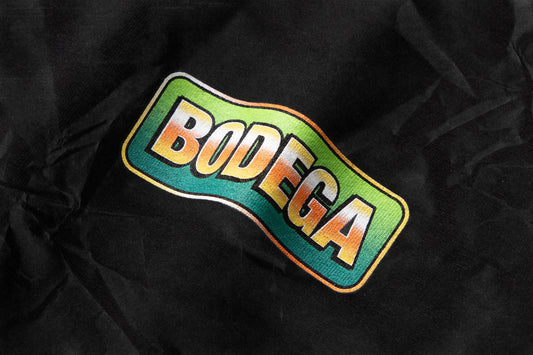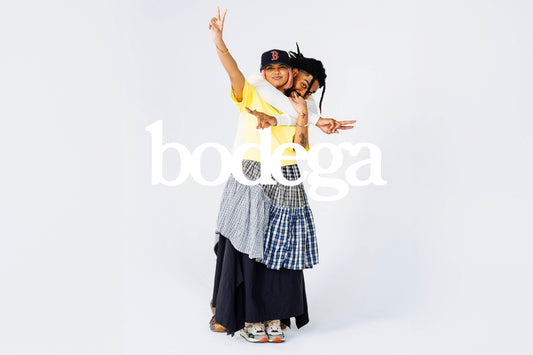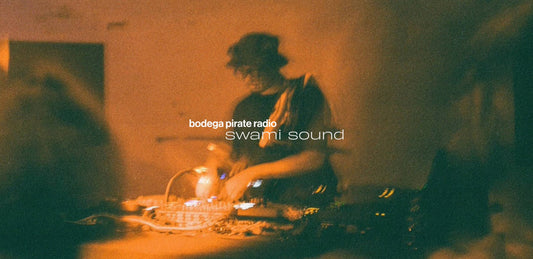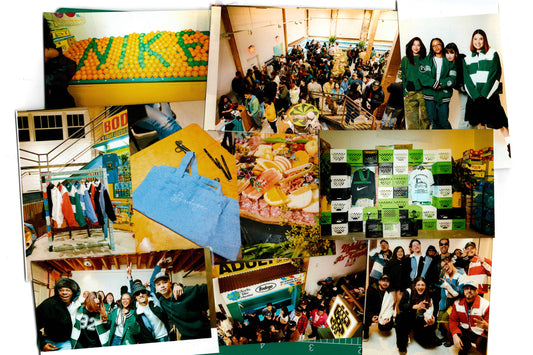With his unique vision and quick ascension in the fashion world, Reese Cooper has become one of the youngest and most respected designers in the industry today.
Born in Atlanta, raised in London, and currently living in Los Angeles where his work is created, Cooper combines the influences of his travels with the skills he obtained in each location, working behind the scenes in various fashion-related fields. With each of his collections linked by a common thematic thread, Cooper’s work is presented from the perspective of a storyteller, composing new chapters every season for a continuing narrative showcasing his modern view of classic Americana. We caught up Reese Cooper to talk about his journey in the industry and his output thus far.
You were born and raised in Atlanta, moved to London and landed up in LA. What role, if any, did those different locations play on your style/brand?
I think it’s impossible to not take in your surroundings, even subconsciously. Whether I know it or not, all these places shaped how I look at things and how I think about design. Certain things I find obvious, such as being raised in Georgia, a lot of outdoors stuff comes as inspiration. Certain things are more subtle such as types of collar or colour palette could be inspired by stuff I picked up in London. All in all I think it has to be a combination of everywhere I’ve lived or even been.
People always reference that you had no formal training in clothing design, but you did extensive work behind the scenes in the fashion industry. Is that correct? Can you give us quick background/resume?
Not too much behind the scenes work in reality. I interned for A Number Of Names* in London for a bit. Helped out on some various shoots here and there. Made early samples with local seamstresses in London. Did a pretty big project for Adidas in 2015 that I ended up using as funding for the first chapter of my own company. I went out to LA in 2016 to visit some friends and check out the city for the first time and ended up meeting some people in production. I ended up just staying out here permanently. Learned the basics on cut & sew production and did a capsule collection November 2016 to test what I learned. Took about a year to find my own place and convinced my friend Jakob to move here with me. We still live only 3 blocks from each other now.
Your age is always referenced. Would you say that your young age has provided positive press and put a spotlight on you or would you say its made people skeptical and put a target on your back, or a combination of the two.
I think a mixture of both. I truly have mixed feelings about it. On one hand I feel like I get looked down upon or not taken seriously in certain business situations. On the other hand, I think the industry has been more forgiving towards me based on my age. Things go wrong for everyone, but I’ve found people have been more lenient on me than more established brands because they recognize I am still learning the business. The reality is I am young and new to this and doing my best to figure it out as we go, so I appreciate everyone’s support and understanding of that.
Your seasonal collections have very thoughtful and provocative story backgrounds. I assume this is an important part of the process for you. Will you always work within these themes? Would you say it gives your label a purpose?
It helps give the design a North Star for me. I look at everything involved in a collection cohesively. Colour palette is inspired by location, choreography or music or some form of show inspired by xyz silhouettes, it all has to flow. Having a centralized theme helps me keep everything somewhat tight knit. I usually know what I want to talk about and then branch out from there.
Do you remember the first articles of clothing you released? What were they?
The first capsule in 2016, looking back at it, actually has a pretty good through line to what I’ve been putting out lately. I did a cargo jacket and coaches jacket out of nice Italian wool I was lucky to get at RagFinders in downtown LA. The idea was contrasting the garment with the fabric, which is something I still love to do. I also still use that same double-entry cargo pocket from the first capsule on a lot of stuff!
You seem proactive in charitable causes and the bigger picture. Would you agree? Would you say that the industry needs more of that?
The way I look at is, if I have this platform and ability to generate money and awareness, you have to use it for the right things. I’m really proud to be with 1% For The Planet, I’m proud of my tree planting program with One Tree Planted, working with local organizations like Create Now in DTLA, all these things really add up. What also excites me though is the ability to hone in on causes such as Mt Wilson Observatory. The hoodies and t-shirts we released on showday with the proceeds going towards the Observatory allowed me to make the biggest donation I’ve ever been able to to a cause. This is a pretty long winded way to say I’m super grateful for everyone who supports us in these efforts. The power of people coming together and supporting even via a t-shirt is 100x the impact I could make without this company and platform.
Would you say that youth has its benefits in fashion? Do you help inspire future generations to pursue fashion.
I think youth has its benefits in any industry! Doing your own brand is no different than any other type of start-up company. It’s extremely long days, not a lot of good night’s sleeps, a lot of expensive mistakes… BUT it’s super rewarding if you can power through it. I can’t imagine trying to start something like this later in life with more responsibilities and less energy.
Obviously its been a short career, but would you say you are doing anything differently from the start? Maybe learning something along the way.
I think my biggest strength has been not going to fashion school. I feel very fortunate to have no idea what I’m doing sometimes. Instead of going off “how did I learn to do this in school?” it’s always been “what makes sense to me?” I think being able to look at some of these challenges in business and design itself from a lens that wasn’t shaped by fashion school has been incredibly helpful. A collection can be the size that makes sense, I can draw the way I like and know how instead of being taught “this is how you draw fashion!” In terms of learning along the way… Every single day I learn a lesson or make a mistake that will (hopefully) only happen once. It’s nonstop education







